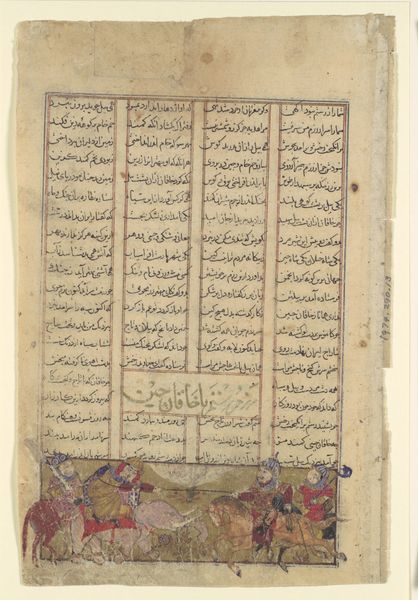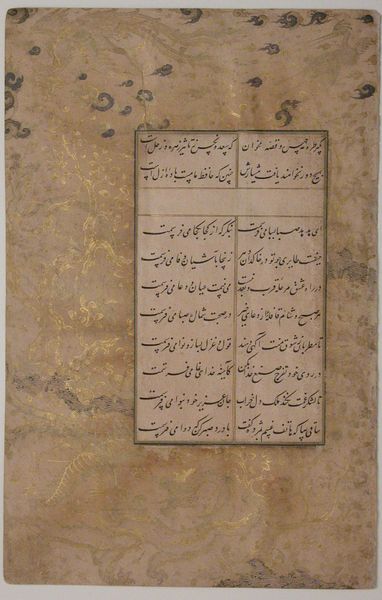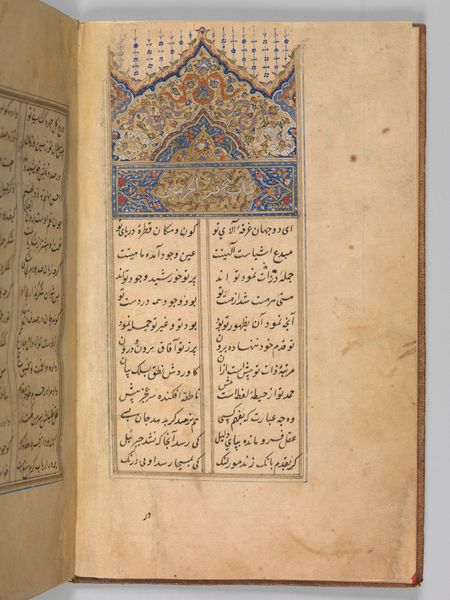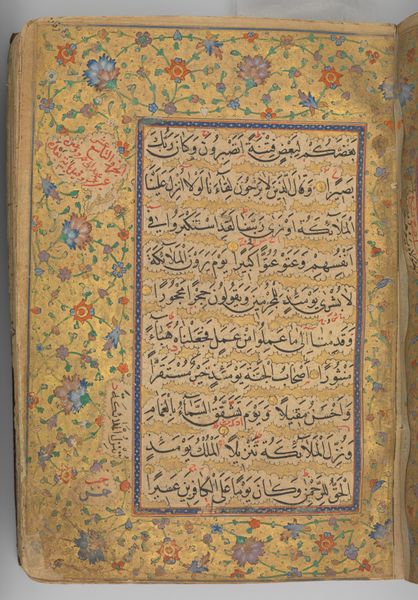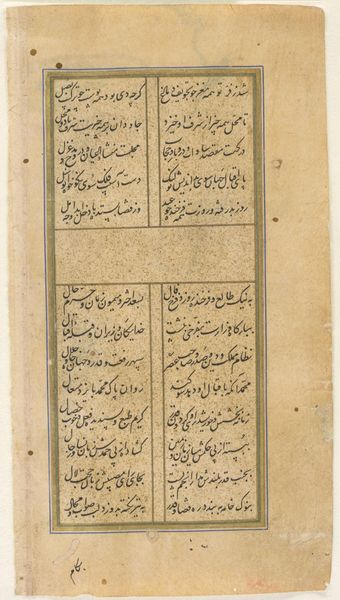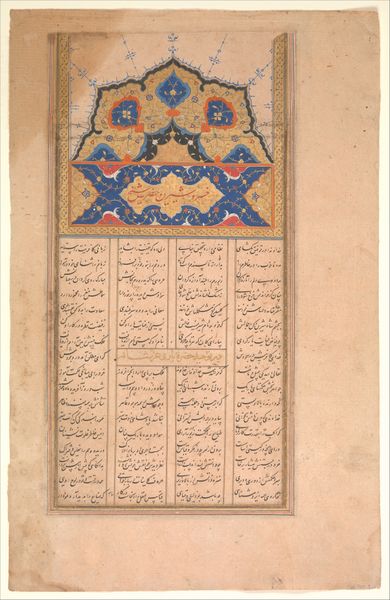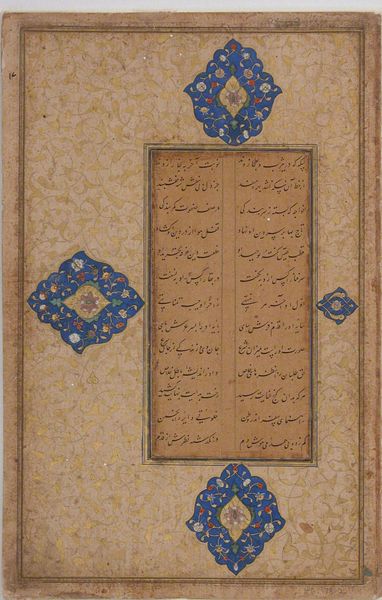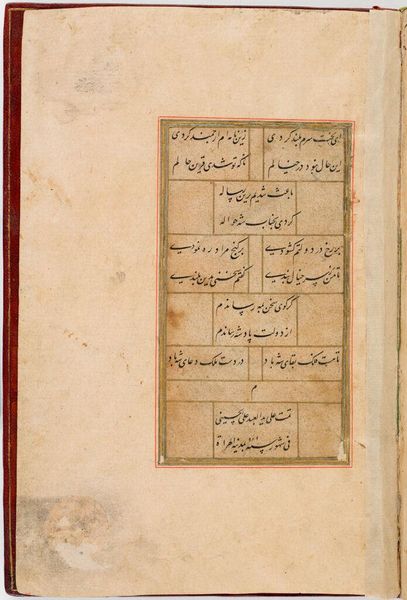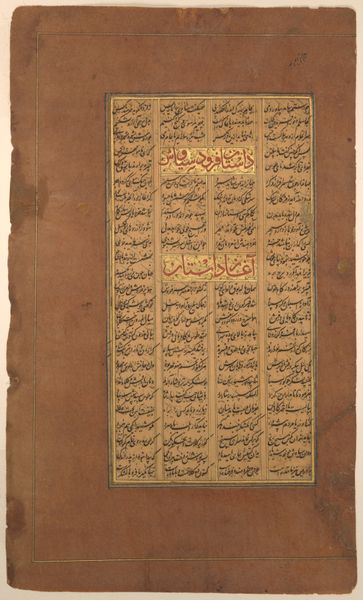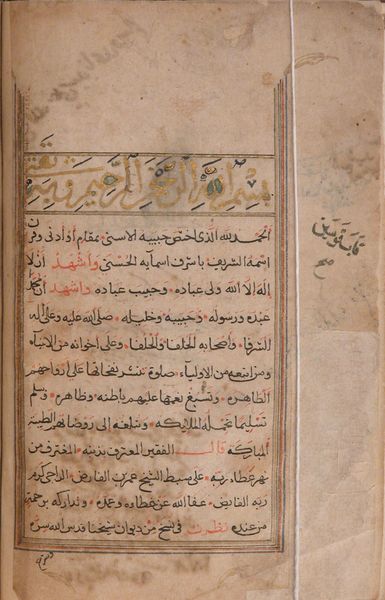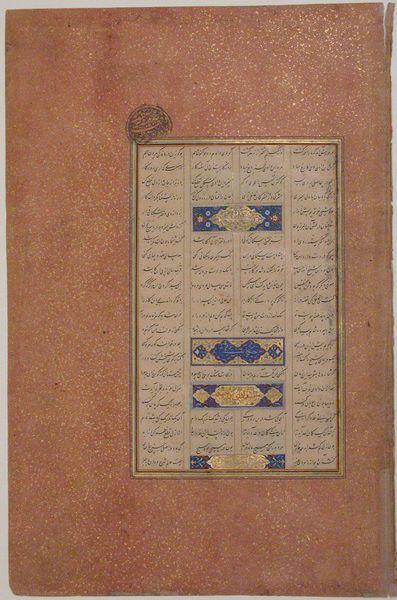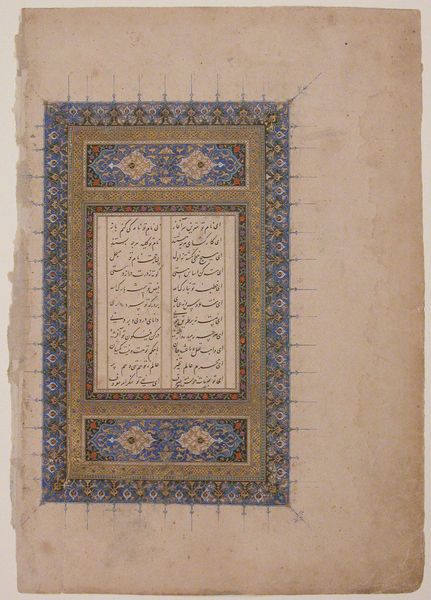
Page of Calligraphy from a Shahnama (Book of Kings) 1305 - 1365
0:00
0:00
paper, ink
#
paper
#
ink
#
coloured pencil
#
islamic-art
#
calligraphy
Dimensions: Page: H. 8 in. (20.3 cm) W. 5 1/8 in. (13 cm) Text block: H. 6 9/16 in. (16.6 cm) W. 4 5/16 in. (11 cm)
Copyright: Public Domain
Curator: I’m immediately struck by how densely packed this page is. It feels almost dizzying. Editor: And that's just one reason why it's so interesting. This is a page of calligraphy from a Shahnama, or Book of Kings, created sometime between 1305 and 1365. It's currently held at the Metropolitan Museum of Art. The text and design, made with ink on paper, showcases not just storytelling, but also the very act of cultural preservation. Curator: Preservation is right. You can see the paper has aged. Tell me more about the craft; the way the writing and colored pencil designs dance across the page. I wonder about the hands that physically shaped it and the workshops where artisans learned the techniques used here. Editor: Indeed. The materials themselves tell a story. Paper wasn’t always readily available. Someone chose ink, paper and colored pencils and made a deliberate decision to capture, through stories, history and values within its scope. It makes me think about literacy during that time. How would access and availability have intersected with race, gender and power? Curator: Exactly! Calligraphy wasn't just writing; it was a highly respected art form that visually echoed the power dynamics of the time. Think about who commissioned the work, the messages they were trying to communicate, and who the intended audience might have been. The stories themselves reinforce or subvert dominant narratives. This wasn't a neutral act; it was an intervention! Editor: I can see that. Considering materiality can open a whole conversation around artistic labor. Highlighting those traditionally unacknowledged skills is essential. Looking closely reveals evidence of immense labor behind the artistic execution here. Curator: Absolutely, thinking about the labor—and more specifically, whose labor, and under what conditions—adds depth. Analyzing this piece helps deconstruct historical assumptions around artistic skill and intent. Editor: Engaging with an artwork from the standpoint of production truly changes how one views its final outcome. I had never considered that. Curator: And analyzing artwork through the prism of social justice offers profound opportunities to broaden access, challenge dominant canons and cultivate critical analysis.
Comments
No comments
Be the first to comment and join the conversation on the ultimate creative platform.


